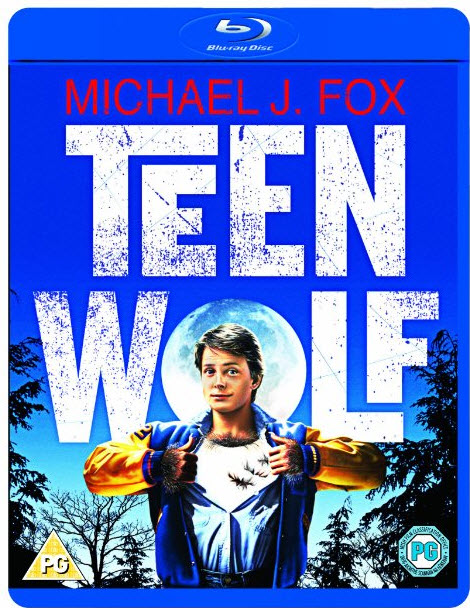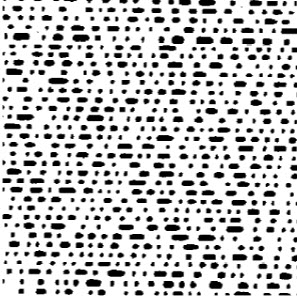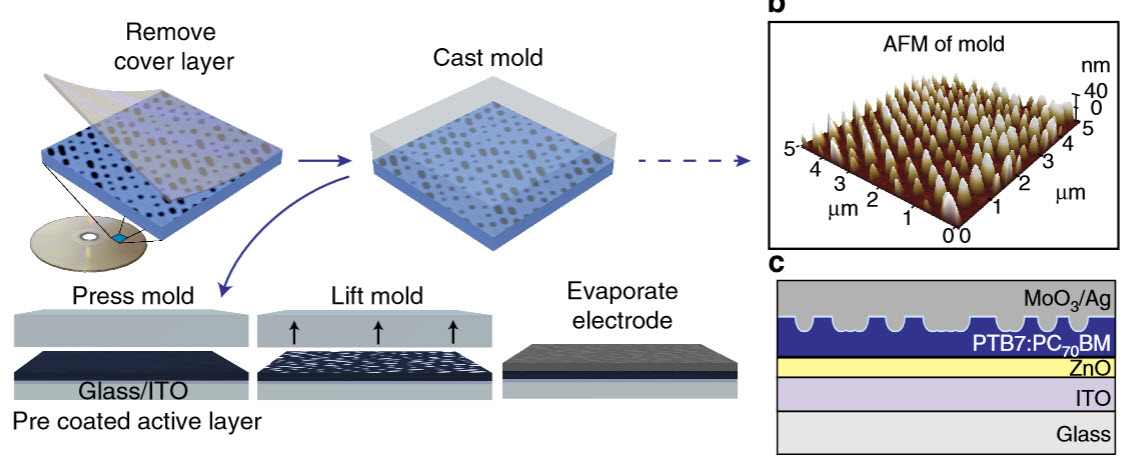Could a Blu-ray disc improve solar-cell performance?
December 12, 2014

It was rated of one of the 25 worst movie conversions to Blu-ray. But never mind that. The “Teen Wolf” Blu-ray disc pattern will work just fine in improving your future solar collector, scientists say. (Credit: 20th Century Fox Home Entertainment)
Here’s an idea: recycle that old grade-B movie Blu-ray disc to improve your future solar collector. Well, sort of. It turns out the Blu-ray data storage pattern when used with a solar collector increases light absorption by 21.8 percent, according to new research from Northwestern University, thanks to Blu-ray discs’ quasi-random pattern and high data density.
The researchers tested a wide range of movies and television shows stored on Blu-ray discs, including action movies, dramas, documentaries, cartoons, and even black-and-white content, and they found the video content did not matter. All worked equally well.
In the field of solar cells, it is known that if texture is placed on the surface of a solar cell, light is scattered more effectively, increasing a cell’s efficiency. Scientists have long been searching for the most effective texture with a reasonable manufacturing cost.
The Northwestern researchers have now demonstrated that a Blu-ray disc’s strings of binary code 0s and 1s, embedded as islands and pits to store video information, give solar cells the near-optimal surface texture to improve their absorption over the broad spectrum of sunlight.
In their study, the researchers first selected the Jackie Chan movie “Supercop.” They replicated the pattern on the active layer of a polymer solar cell and found the cell was more efficient than a control solar cell with a random pattern on its surface.

The quasi-random pattern of pits on a Blu-ray disc imprinted onto the metal electrode layer of polymer solar cells improves their performance (credit: Alexander J. Smith et al./Nature Communications)
The researchers looked closely at the data processing algorithms in the Blu-ray standard and noted the algorithms serve two major purposes:
- Achieving as high a degree of compression as possible by converting the video signals into a seemingly random sequence of 0s and 1s; and
- Increasing error tolerance by adding controlled redundancy into the data sequence, which also limits the number of consecutive 0s and 1s.

Processing of Blu-ray-patterned solar cells. (a) Schematic diagramming the process for delaminating a BD and casting a PDMS mold on the exposed recording layer; fabricating the nanopatterned solar cells; and imprinting the active layer using the nanopatterned PDMS mold and evaporating the MoO3/Ag electrode. (b) AFM image of the nanopatterned PDMS mold. (c) Schematic diagram of the solar cell architecture used in the numerical and experimental portions of this work. (Credit: Alexander J. Smith et al./Nature Communications)
These resulted in a quasi-random array of islands and pits (0s and 1s) with feature sizes between 150 and 525 nanometers. And this range, it turns out, works quite well for light-trapping applications over the entire solar spectrum, the researchers found.
The National Science Foundation supported the research, published Nov. 25 in the journal Nature Communications. No werewolves were harmed in the research process.